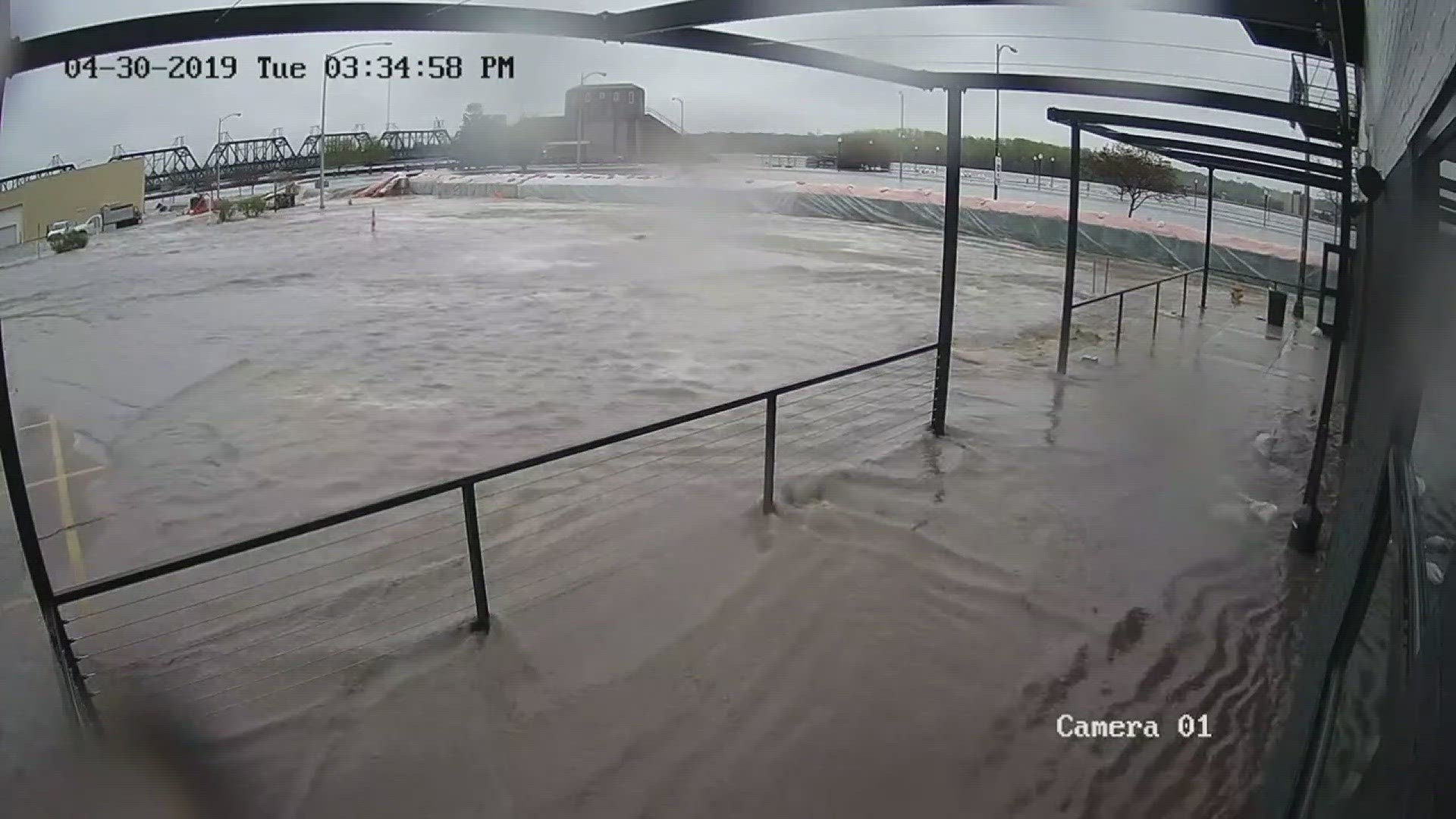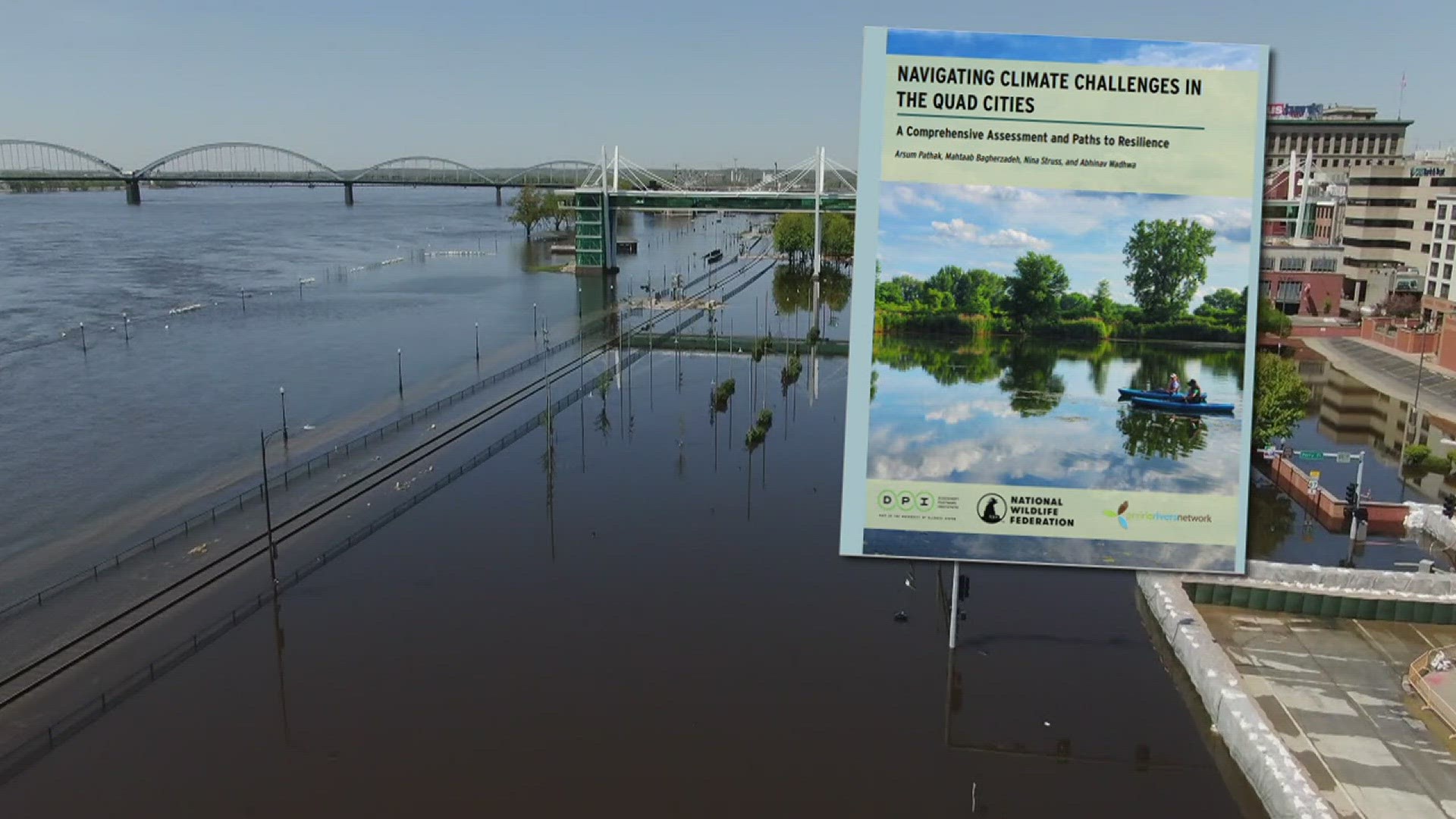MOLINE, Ill. — A new report finds that climate change could mean a warmer, wetter future for the Quad Cities.
In the summer of 2023, the National Wildlife Federation, Prairie Rivers Network and the Discovery Partners Institute at the University of Illinois System began analyzing the impacts of climate change to the Quad Cities through the end of the century. It found extreme weather, including flooding, droughts and high temperatures, could affect the quality of life. The report also identified extreme rainfall, rainfall with more than three inches per hour, as a concern. It also recommends solutions to ease the impacts.
"It's no surprise that flooding, whether it was river flooding or flash flooding were some of the primary risks associated with the Quad Cities," said Nina Struss, the river health and resiliency organizer for Prairie Rivers Network.
Rock Island and other downstream areas are at particular risk, as higher flood could breach the existing levees. Davenport and Bettendorf could also experience repeated flooding, exacerbated by runoff from the densely developed landscape.
Places like Cargill AgHorizons, Isle Casino Hotel, the Martin Luther King Center, Vibrant Area at the MARK and Lindsay Park Yacht Club could become susceptible to flooding as early as 2040, according to the report. The I-74 Bridge could also be at an increased risk of flooding.
"It's also the flash flooding caused by those alarming events," said Arsum Pathak, senior adaptation specialist for the National Wildlife Federation. "So a lot of standing water on the bridges where the potential for the water to infiltrate is lower than the amount of rainfall falling, which would lead to flooding on these critical infrastructure systems."
"Wetlands like Nahant Marsh and the Quad Cities Conservation Alliance Wetland Center, they'd face challenges," Pathak said. "With disruptions in the water balance, usually more frequent droughts and flash floods that are projected for the future, impacting the aquatic and wildlife that call these habitats home."
Interview with Nina Struss from Prairie Rivers Network
She added that changing temperature and precipitation patterns can alter forests like the Loud Thunder Forest Preserve in Rock Island County.
"Making it unsuitable for the tree species that are already there and also potentially opening doors for non-native species to replace those existing tree species," Pathak said. "Losing these critical ecosystems also means that we will potentially be losing all the benefits that are provided by these systems to the communities and wildlife."
Rock Island and Davenport are facing medium risks of wildfire, which is higher than about 40% of the communities across the country, according to the report. The Moline and East Moline areas had a significantly low risk, which researchers said could be due to existing land cover and housing units.
Extreme heat was a concern identified too. The Quad Cities region currently experiences an average of three days a year with temperatures above 95 degrees. Under a high-emission scenario, the report found the Quad Cities could experience nearly two months of those temperatures.
"For our wildlife and biodiversity who need certain temperature ranges to function and survive, it poses, of course, a huge threat to the existence and the functioning of these ecosystems and biodiversity," Pathak said. "It adds stress to human health, causing difficulties to breathe and increasing risks of heatstroke if ourselves and the systems are not prepared to deal with these feature changes."
The report recommends using several nature-based solutions to enhance the region's resilience in the face of climate change.
Trees in the Quad Cities currently absorb approximately 69 million gallons of storm runoff, three million pounds of air pollution and more than 100,000 tons of carbon pollution annually. Protecting the Quad Cities' existing urban forest will reduce heat and flooding, the report said.
Nahant Marsh also catches and filters up to two billion gallons of water during severe rain events. The report said ensuring that upstream wetlands like Nahant Marsh remain health is one way to reduce climate-fueled flooding.
Green roofs, permeable pavement and storm water gardens known as bioswales could reduce flooding caused by runoff, the report said.
According to the report, community leaders are also considering restoration projects, such as converting vacant lots to green spaces, restoring ravines and increasing equitable river access.
For information on funding to plant trees, you can reach out to Nina Struss at nstruss@prairierivers.org.
"Our assessment doesn't have all the answers," she said. "The hope is that it will be a starting point for conversations about the options for creating a stronger and safer Quad Cities for all."
You can read the full report below.
Watch more news, weather and sports on News 8's YouTube channel


